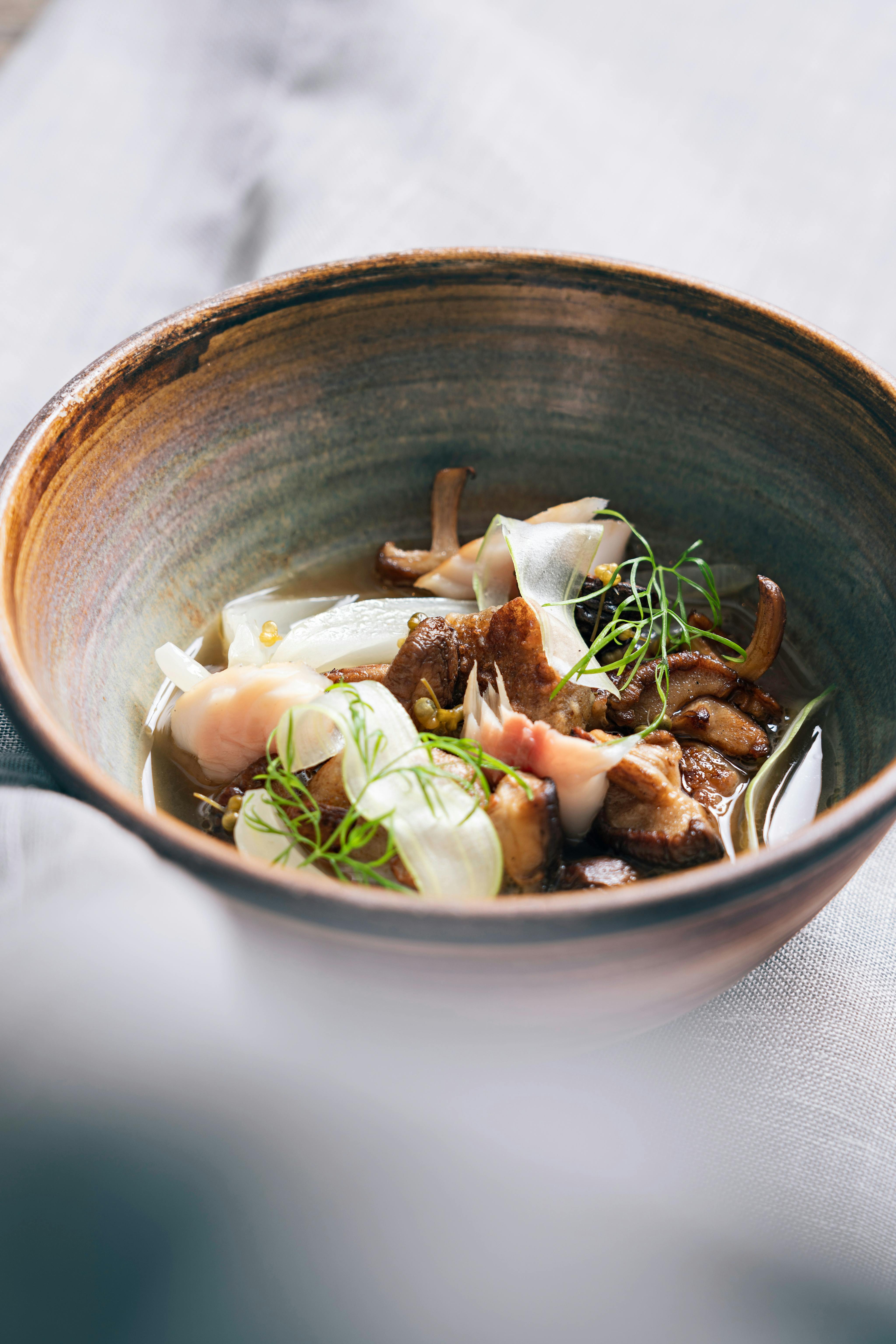From Zero-Waste to Award-Winning Taste with Elvira Lindqvist
There’s something (responsibly) fishy about Swedish chef Elvira Lindqvist’s smoked Nile Tilapia and zero-waste potato gnocchi.
Words by Sophie Miskiw. Photography by Johan Ståhlberg.
Break down Elvira Lindqvist’s plate of smoked Nile tilapia with potato gnocchi and fennel and it speaks volumes about her. Each seemingly-simple component on the plate has a backstory that illustrates what she stands for as a chef - and as a person.
Having most recently spent several years as the head chef at the award-winning restaurant in photography museum Fotografiska, Elvira has embraced - and now virtually embodies - the eatery’s ground philosophy. In short: start with the vegetable, don’t waste food, be kind to the planet, and make sure it tastes good.
“The gnocchi, potato broth, and fish are always a good base, and then you can add in whatever is in season. The good thing about this dish is that you can tweak it and use it the whole year. Just now we have fennel with it, but when other vegetables are in season you can always use them instead,” says Elvira.
The zero-waste gnocchi was a product of the team at Fotografiska seeking innovative new ways to use leftover bread. The ‘waste’ bread is first dried before being ground into flour and then added to the potato and eggs. When boiling the potatoes to make the gnocchi, Elvira adds leeks and herbs to the water so that it becomes a broth, which can later be reduced to make a stock. She admits there will always be waste but the aim is to end up with as little as possible - in this case, the leek peel is all that ends up being thrown.
“Instead of seeing waste as a problem that you need to solve, you can see everything as an opportunity. If you take something as simple as potato water, it’s not potato water - it’s a broth. If you add some nice flavours to it, then it’s going to taste delicious. Once you start thinking in that way, everything is a potential part of a dish.”
A responsible fish dinner
All of the dishes on the menu at Fotografiska serve two purposes: they are designed to taste great whilst increasing awareness about sustainability. This dish meets the brief in several ways, even the fish - a smoked Nile tilapia - has been responsibly sourced from Gårdfisk, a Swedish company farming fish in tanks. Gårdfisk takes its commitment to circular production to impressive new heights - using the waste from the tanks to feed the plants which in turn are used to feed the fish.
“It’s common knowledge that the fish in the ocean need to stay in the ocean,” says Elvira. “Gårdfisk is a really good company that I like working with and they are doing everything they can to be circular and good for the environment. And it’s a delicious fish!”
The meaty fish has a mild flavour and so doesn’t overpower the other ingredients on the plate. That’s the idea, explains Elvira - meat or fish may be used as an additive, but not as the star of the show. Each ingredient, including vegetables which are lower cost and so often seen as easier to throw away, is considered of equal importance and should be treated with the same respect as an animal.
“The old way would be to look at a vegetable and animal as having more desirable and less desirable parts. If you look at a whole fennel, there’s a root system no-one really uses. But if you boil the root system it’s delicious! The stems are really nice too, and then you have the fennel flowers which everyone loves. If you’re curious about how everything tastes, you can always find a new way to work with it.”
“Instead of seeing waste as a problem that you need to solve, you can see everything as an opportunity."
Words by Sophie Miskiw. Photography by Johan Ståhlberg.
